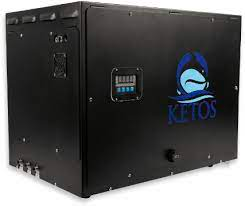Remotely Measure Levels of Mercury in Water
Monitoring Water for Mercury With KETOS SHIELD
Accurately Measure Levels of Mercury in Water
Download our KETOS SHIELD overview to learn how:
- Users can monitor water quality from anywhere - even remotely - while getting the latest insights delivered directly to their mobile device
- KETOS devices can be arranged in a modular setup, allowing operators to test from multiple strategic sources simultaneously
- The KETOS system eliminates the need for multiple analyzers, hand-held devices, manual water sampling, and expensive third-party lab analysis
- Results remain EPA-compliant and lab-accurate (in ppb)
- Water operators can set up their own threshold alerts to take immediate access during spikes in variables
Learn To Automate Mercury Testing In Water With Lab-Accurate Results in Real-Time
"*" indicates required fields
Testing for Mercury in Water
 KETOS SHIELD covers various water testing parameters, including mercury and heavy metals. Monitoring happens in real-time and can lower up-front costs via an industry-leading $0-CAPEX subscription model.
KETOS SHIELD covers various water testing parameters, including mercury and heavy metals. Monitoring happens in real-time and can lower up-front costs via an industry-leading $0-CAPEX subscription model.
As an award-winning intelligent water management solution, KETOS SHIELD provides timely monitoring for mercury and 30+ other water testing parameters (including inorganics, environmental factors, and nutrients). Monitoring variables is easy via our interoperable, modular system that uploads data to the cloud for secure 24/7 access from anywhere.
Why Monitor Water for Mercury with KETOS
Mercury is a highly mobile and extremely toxic element that can bioaccumulate in fish, which can put humans and animals that eat them at risk.
The Clean Water Act regulates monitoring mercury in effluent, waste, and ambient waters to protect human populations and the environment. The EPA also issues mercury guidelines and national standards for wastewater discharged to municipal sewage treatment facilities and surface water. There are also specific guidelines across other industries, including electric steam utilities (coal, oil, natural gas) and their resulting waste (for example, coal ash ponds, a by-product of coal-powered plants).
The EPA, under the Safe Drinking Water Act, has set enforceable regulations for mercury at 0.002mg/L. Public water systems are under strict regulatory scrutiny to ensure mercury levels do not rise above this two ppb threshold.
With mercury being such a toxic element and compliance in place to ensure its careful regulation, it’s crucial to have trusted solutions in place that can prevent contamination events and ensure high levels of mercury do not enter the surrounding environment.
What are the Issues with Mercury in Water?
Mercury contamination in water sources poses significant environmental and public health concerns due to its toxic properties and potential long-term consequences. Here are key issues associated with mercury in water:
- Health Risks: Mercury is a potent neurotoxin that can cause serious health problems in humans, even at low concentrations. Chronic exposure to mercury through contaminated water can lead to neurological disorders, developmental delays in children, cardiovascular issues, and kidney damage. Pregnant women and young children are particularly vulnerable to the adverse effects of mercury exposure, as it can harm fetal development and cognitive function.
- Bioaccumulation: Mercury has a tendency to accumulate and biomagnify in aquatic food chains. Microorganisms convert inorganic mercury into methylmercury, a highly toxic form that accumulates in fish, shellfish, and other aquatic organisms. Predatory fish at the top of the food chain, such as tuna and swordfish, can contain high levels of methylmercury, posing risks to consumers who consume these contaminated seafood products.
- Ecosystem Impact: Mercury contamination can disrupt aquatic ecosystems, affecting biodiversity, food webs, and ecosystem functions. Methylmercury accumulation in aquatic organisms can lead to reproductive failure, reduced growth rates, and population declines in sensitive species. Changes in ecosystem structure and function can have cascading effects on ecosystem services, including water purification, nutrient cycling, and carbon sequestration.
- Regulatory Concerns: Governments and regulatory agencies worldwide have established guidelines and standards for mercury levels in water to protect human health and the environment. Compliance with these regulations poses challenges for industries, municipalities, and other stakeholders, requiring effective monitoring, treatment, and mitigation measures to ensure water quality and safety.
- Sources of Contamination: Mercury contamination in water can originate from both natural and anthropogenic sources. Natural sources include volcanic eruptions, weathering of mercury-containing minerals, and atmospheric deposition. Anthropogenic sources include industrial activities such as coal combustion, mining, metal smelting, and wastewater discharges. Contaminated runoff from landfills, agricultural areas, and urban areas can also contribute to mercury pollution in water bodies.
- Treatment Challenges: Removing mercury from water sources can be challenging due to its chemical properties and persistence. Conventional treatment methods such as coagulation, sedimentation, and filtration may be ineffective for mercury removal. Advanced treatment technologies such as activated carbon adsorption, ion exchange, and membrane filtration may be required to reduce mercury concentrations to acceptable levels.
Causes of Mercury in Water
Mercury contamination in water stems from both natural processes and human activities, posing significant environmental and health concerns. Natural sources include the release of mercury from volcanic eruptions, weathering of rocks, and the erosion of mercury-containing minerals like cinnabar. However, the primary contributor to mercury pollution in water is anthropogenic activities, particularly industrial processes such as mining, coal combustion, and wastewater discharges from manufacturing facilities. Mercury enters water bodies through atmospheric deposition, surface runoff, and direct discharge, where it accumulates in sediments and the aquatic food chain. Once in the water, mercury undergoes transformations into its more toxic form, methylmercury, through microbial processes, bioaccumulating in fish and other aquatic organisms. Consumption of contaminated fish poses serious health risks, including neurological and developmental impairments. Controlling mercury pollution requires comprehensive strategies to reduce emissions, improve waste management practices, and monitor water quality to mitigate its environmental and human health impacts.
Acceptable Levels of Mercury in Water by Industry
Mercury contamination in water is a significant environmental concern due to its toxicity. Various industries have established acceptable levels of mercury in water to mitigate its harmful effects. These standards differ depending on the industry and the specific purpose of water usage. For example, the Environmental Protection Agency (EPA) in the United States sets maximum contaminant levels (MCLs) for mercury in drinking water, while industries such as mining, manufacturing, and agriculture may adhere to different guidelines tailored to their operations. Proper management and monitoring of mercury levels in water are crucial to prevent adverse effects on human health and the environment. Compliance with these acceptable levels often involves implementing stringent pollution control measures and employing advanced technologies for wastewater treatment.
| Industry | Acceptable Levels of Mercury (ppb) |
|---|---|
| Drinking Water (EPA) | 2 ppb (Maximum Contaminant Level) |
| Mining | Varies; regulated by environmental agencies |
| Manufacturing | Depends on specific processes and regulations |
| Agriculture | Varies based on agricultural practices and regulations |
How to Easily Monitor Water for Mercury
Instead of measuring mercury with a meter that only measures a handful of conditions; the KETOS SHIELD is capable of mentoring dozens of water related issues — in real-time.
Get a device that covers multiple water testing parameters at once. With KETOS, your organization can watch levels of mercury and other heavy metals like lead, selenium, copper, and more from one convenient, user-friendly dashboard. Choose from 30+ water testing parameters, set threshold alerts, and build a 24/7 snapshot of water quality across operations.
Whether you’re tasked with detecting nickel in industrial process water, measuring molybdenum levels in drinking water, or monitoring nitrates in the food industry, as well as assessing the presence of nitrates in surface water, KETOS’ automated water monitoring solution offers a versatile and efficient tool. By incorporating nitrate detection capabilities for surface water analysis, it assists in safeguarding water quality across various applications, saving time and reducing compliance issues.
What Water Quality Parameter Do You Test Most Often?
The KETOS SHIELD remotely monitors dozens of water quality parameters. Which one do your water operators test most often?
KETOS Awards
















About KETOS
KETOS is a fully integrated platform that combines hardware, software, connectivity, automated reporting, predictive analytics, and maintenance to automate water monitoring and testing. KETOS enables water operators to identify and solve mission-critical water efficiency and quality challenges in real-time, or before they happen through predictive algorithms, to ensure that water meets specific quality and safety standards.

